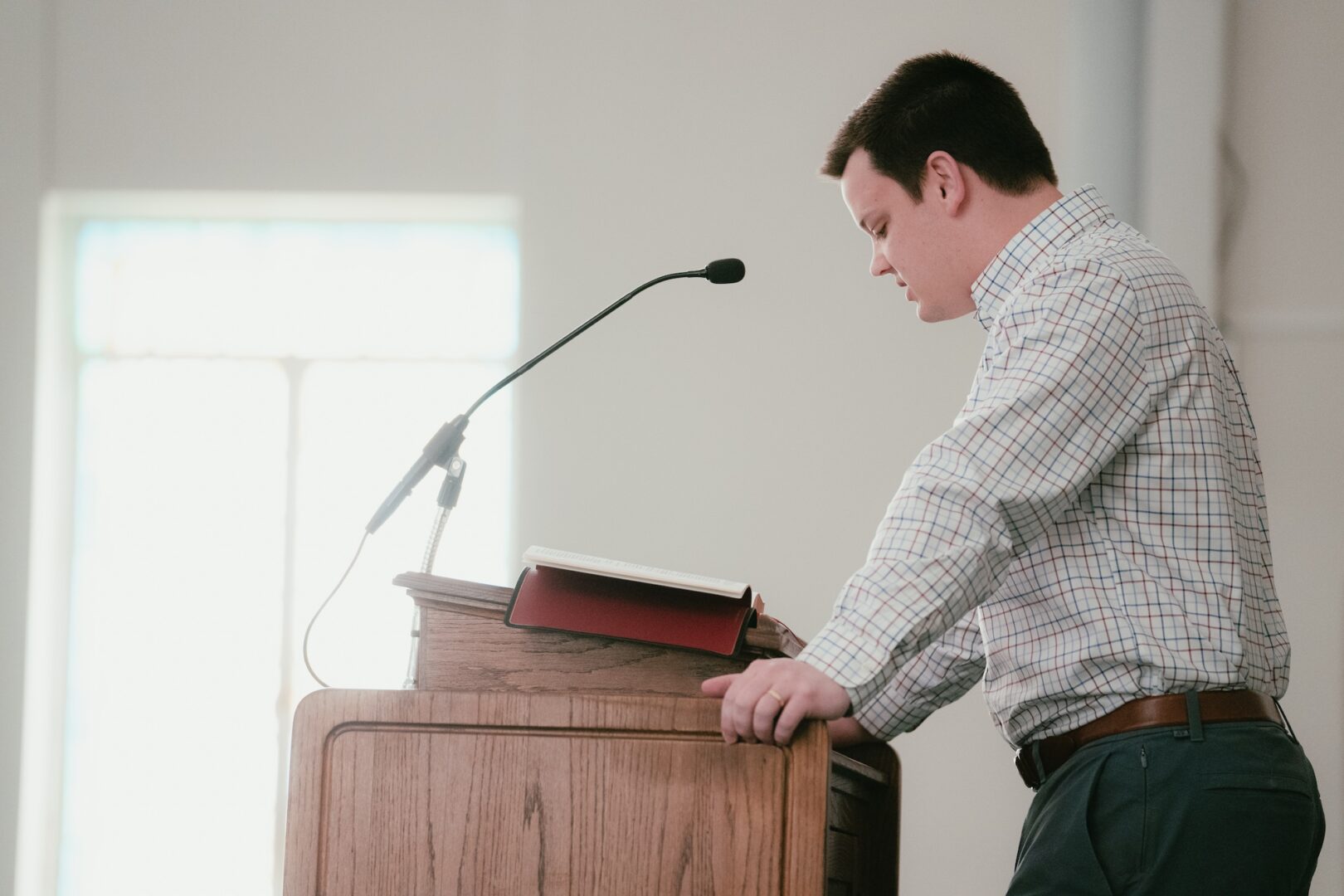In the classroom at Southwestern Seminary, I regularly remind preaching students of the importance of what I call “pulpit stewardship.” This refers to stewarding time, energy, and resources faithfully in preparation for the message the preacher delivers on Sunday. If the preacher steps into the pulpit without having prepared his heart and his message properly and proceeds to preach for 30 minutes to 300 people, he will have wasted 9,000 of the Lord’s minutes!
I am convinced that such an admonition has application for those who preach the timeless and titanic doctrine of the resurrection on Easter Sunday each year. While every Sunday worship gathering is grounded in resurrection reality, Easter Sunday represents the opportunity to articulate clearly the implications of the empty tomb on what is often the best-attended Sunday of the year. While not exhaustive, consider the following elements which may enhance the effectiveness of your Easter message:
Concentrate
Concentrate on developing your message from a single passage of Scripture. Certainly, brief references to other texts which address an aspect of the resurrection are appropriate. However, based on the text-driven philosophy of preaching, working comprehensively through a single unit of thought can maximize clarity and add depth to your message.
It can also make the task of preparation more manageable in that you don’t feel the pressure of roaming through Scripture to identify every text that mentions resurrection in a Nave’s Topical Bible approach. Instead, you are free to drill down deeply into one passage and extract its riches.
Consider texts like 1 Corinthians 15:1-11, where Paul serves up a Gospel summary that highlights the impact of a third-day resurrection. Another powerful text comes from the inspired pen of Peter in 1 Peter 1:3-9. There, he writes of the living hope of the resurrection of Jesus Christ from the dead and proceeds to describe the incomparable inheritance believers possess. If you are more inclined to address the narratives related to the resurrection, consider the account in Matthew 28:1-10 or the Emmaus Road story of Luke 24:13-35.
Connect
Connect Christ’s resurrection to His crucifixion. Just as you should aim to connect the cradle with the cross when preaching the Christmas story, your preaching at Easter should tie together the occupied cross and the empty tomb. This connection is vitally important considering the post-modern mindset and decreasing biblical literacy which plague evangelical Christianity today.
The true message of Easter is grounded in what God has done in history. In the New Testament, this history is conveyed through Christ’s incarnation (John 1:14), His substitutionary and atoning death on the cross (Rom. 3:21-25), and His triumphant resurrection from the dead (1 Cor. 15:20). The hollow mantra positing that it does not matter if the events of crucifixion and resurrection actually occurred but only that Christians should be good, love others, and seek to make the world a better place is absolutely foreign to the testimony of Scripture. Keep the realities of the bloody cross and the empty tomb front and center as you preach at Easter. Note how the Apostle Paul does exactly this when he addresses the issue of justification (Rom. 4:25). Aim to assist your hearers in marveling at the wonder and reality of bodily resurrection (1 Cor. 15:50-59). Fittingly, James Denney, commenting on the reality of Christ’s resurrection, stated: “The rising is relative to the grave and burial, and If we cannot speak of a bodily resurrection, we should not speak of the resurrection at all.”1
Celebrate
Celebrate the conquest of the last enemy, death, through the resurrection of Jesus Christ (1 Cor. 15:20, 55-56). In the Old Testament, this ultimate triumph is foreshadowed in the Abraham and Isaac narrative (Gen. 22 and Heb. 11:17-19), as well as in the plight of Job (Job 19:25-27). In the redemptive-historical progression of the doctrine of resurrection into the New Testament, we encounter a dialogue with Martha, following Lazarus’ death, where Jesus heralds Himself as “the resurrection and the life” (John 11:25). Writing to the church at Rome, Paul stresses that death no longer has dominion over Christ and, by extension, His followers. Believers are now under no condemnation, assured that Christ is raised and presently interceding for them (Rom. 6:5-11; 8:34). Moving forward, the writer of Hebrews stresses that Christ, through His death, has destroyed the devil and delivered those “who through fear of death were subject to lifelong slavery” (Heb. 2:14-15). This decisive defeat of death is centered in the resurrection and provides the basis for the living hope and inheritance of believers that Peter celebrates (1 Pet. 1:3-9).
Confirm
Confirm the fact that Jesus is alive by appealing to Scripture before experience. I love the old hymn, “He Lives!” and its ringing refrain that Jesus is alive and lives in the hearts of believers. I appreciate appeals to the many accounts of transformed lives as evidence of the resurrection’s validity. They reflect the radical change that happened with Peter, the disheveled denier at the passion who became the bold proclaimer at Pentecost. However, our confirmation of the reality of the resurrection should be based primarily on the objective truth of inerrant Scripture.
Related to the promises of God and the presentation of the doctrine of resurrection, the Bible frequently uses the term “hope.” Biblical hope always should be distinguished from the concept of wishful thinking that we regularly associate with hope. We hope the weather will be favorable or that our team will win, but we have no meaningful guarantee that either wish will become reality. In contrast, the biblical concept of hope is one of profound certainty. It is rooted in the very character of God, who has a perfect track record of keeping His promises. One preacher expressed it this way: “You cannot have an Easter faith without an Easter fact.” Vividly, he continued, saying: “The resurrection is God’s ‘amen’ to Christ’s statement, ‘It is finished!’”2
Exalt
Exalt the Lord Jesus Christ when you preach this Easter. Of course, He should be exalted and magnified whenever you preach. Yet, with perhaps a captive and more crowded Easter audience, do not miss the opportunity to extol the worth, wonder, and perfections of our resurrected Lord. Help your hearers understand something of the impact of the empty tomb today. The Apostle Paul certainly did that when he reminded Corinthian readers that, apart from Christ’s resurrection, their faith would be futile, and they still would be held in sin’s bondage (1 Cor. 15:17). The hymnwriter Samuel Gandy expressed well the impact of an occupied cross and an empty tomb: “Well may the Accuser roar of ills that I have done: I know them all, and thousands more: Jehovah knoweth none.”3
In the final analysis, the goal of all who preach at Easter must be to exalt the risen Christ so that, by the work of the Word and the Spirit, all who hear might live in the blazing light of the resurrection. “Lead us, we pray Thee, to the grave that is empty, into the garden of resurrection where we may meet our risen Lord. May we never again live as if Thou were dead.”4
- James Denney, Jesus and the Gospel (New York: Legare Street Press, 2022), 113. ↩︎
- S. Lewis Johnson, “The Resurrection of Christ” Matthew 27:62-28:15, sljinstitute.net, accessed 02/28/25. ↩︎
- Samuel W. Gandy, “His Be the Victor’s Name,” Quoted in John White, The Fight: A Practical Handbook for Christian Living (Downer’s Grove: Intervarsity, 1976), 88-89. ↩︎
- Peter Marshall, April 8, 1949, “Prayers offered by the Chaplain, the Rev. Peter Marshall, D.D.: At the Opening of the Daily Sessions of the Senate of the United States During the Eightieth and Eighty-first Congress 1947-1949.” ↩︎








